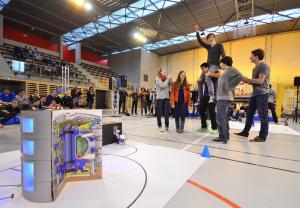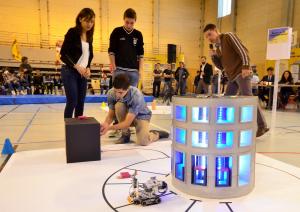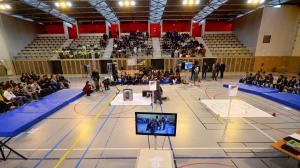As Jean-Pierre explained to the disappointed teams, because the lighting and surface conditions were not necessarily the same as those in the home practice areas only the teams that had included enough of a tolerance margin in their programs were successful: "Engineering comes down to making choices, and all engineers learn from their mistakes," he told the students, as he encouraged them to persist in their exploration of mechanics, electronics and programming.
For the teams still in the race, the second challenge was a timed remote handling task that involved picking up as many blanket modules as possible from the ITER Tokamak model and delivering them successfully to the nearby Hot Cell.
"The technical complexity of this competition and the fact that the students have worked together, collaboratively, around a common project, responds in all points to what we'd like to see more of in schools," said Bruno Pélissier who, as inspecteur pédagogique d'académie, is involved in the content of school programs in the area. "We supported this program—and worked hard to extend it to the high schools—because it provides an opportunity for practical, hands-on applications for what is learned in the classroom."
At the junior high level, it was a clear victory for the Sainte-Tulle team for the second consecutive year, with a robot that was rapid and precise. Their recipe for success? "Close team work and pleasure in working on this project with our professors," team leaders Alicia, Flavien and Mathis reported.




